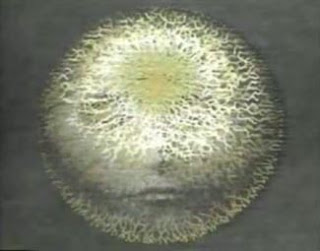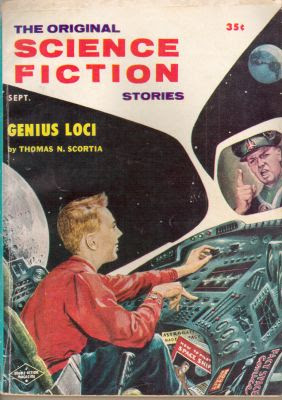Groundwork of Evangelion: 1.0/“cinematic” comics
by Dash Shaw
Wednesday, July 29, 2009
Read Comments (27)
This is my first post here. I’ve never regularly written about comics, or anything else, before so please “go easy” on me and forgive my poor word-writing ability. Thanks to the CC crew for inviting me to participate. I will try to post once a month, unless my previous posts become too embarrassing. Groundwork of Evangelion: 1.0 (2008) is a collection of preparatory drawings and pencil tests for the (forthcoming to the USA) animated movie. The pencil test drawings usually follow a grid but occasionally a single frame is enlarged to cover two tiers. It reminds me of how sometimes when a newspaper strip was collected into a book format the publisher would print a single panel larger than the others. Since everything was originally drawn to the same scale, a single panel would have larger text and the ben-day dots would be bigger, oppressive. It’d give it a Pop art aesthetic for just one panel. Or the old Crockett Johnson Barnaby reprints where the publisher stacked the panels Yummy Fur style. My favorite example of this is a Little Orphan Annie reprint where all of the panels were spaced out strangely, still following a grid but with unusually large gutters. Each panel was orphaned from the others. I wonder if the cartoonists themselves approved any of these decisions.
Groundwork of Evangelion: 1.0 (2008) is a collection of preparatory drawings and pencil tests for the (forthcoming to the USA) animated movie. The pencil test drawings usually follow a grid but occasionally a single frame is enlarged to cover two tiers. It reminds me of how sometimes when a newspaper strip was collected into a book format the publisher would print a single panel larger than the others. Since everything was originally drawn to the same scale, a single panel would have larger text and the ben-day dots would be bigger, oppressive. It’d give it a Pop art aesthetic for just one panel. Or the old Crockett Johnson Barnaby reprints where the publisher stacked the panels Yummy Fur style. My favorite example of this is a Little Orphan Annie reprint where all of the panels were spaced out strangely, still following a grid but with unusually large gutters. Each panel was orphaned from the others. I wonder if the cartoonists themselves approved any of these decisions.
Anyway, this book isn’t really a comic book or an ani-manga (stills from a movie arranged as a comic for no good reason- see the Pantheon Scanner Darkly release) although you could read it as a confusing one. And it doesn’t have the fanboy nerd-fest feel of one of those “concept art” books, where you can see endless drawings of how a mecha looks and what all of the parts supposedly do.
This is a book of ephemeral, notational drawings for a movie that I haven’t seen yet. Large portions of it look like if Cy Twombly drew a comic.
 Other parts look like portraits of character scenes where the “performance” in the drawings are still being worked out. Since it’s all light-boxed from previous drawings, it has a thin-line traced drawing look like Warhol line drawings.
Other parts look like portraits of character scenes where the “performance” in the drawings are still being worked out. Since it’s all light-boxed from previous drawings, it has a thin-line traced drawing look like Warhol line drawings. They’re marked with little notes that I don’t understand. All of the Japanese I once knew is gone, and I don’t know filmmaking vocabulary anyway. Unlike comics, which have a widely-known “insider” language (“these bubbly shaped frames around the words mean the character is thinking- is that cool with everybody?” “yeah, okay”) this is a totally foreign “insider” language used by the people at the studio to communicate to each-other. They weren’t drawn to be published for a wide audience; but here they are, published, and I could go into Kinokuniya in NYC and buy a copy. Awesome.
They’re marked with little notes that I don’t understand. All of the Japanese I once knew is gone, and I don’t know filmmaking vocabulary anyway. Unlike comics, which have a widely-known “insider” language (“these bubbly shaped frames around the words mean the character is thinking- is that cool with everybody?” “yeah, okay”) this is a totally foreign “insider” language used by the people at the studio to communicate to each-other. They weren’t drawn to be published for a wide audience; but here they are, published, and I could go into Kinokuniya in NYC and buy a copy. Awesome.
 It seems like “cinematic” is used as a derogatory word for a comic because it suggests that the comic was designed for the reader to use it as a springboard to imagine something that it’s not. Obviously, most cartoonists would like to think that they’re making comics as opposed to imaginary movies awaiting a budget.
It seems like “cinematic” is used as a derogatory word for a comic because it suggests that the comic was designed for the reader to use it as a springboard to imagine something that it’s not. Obviously, most cartoonists would like to think that they’re making comics as opposed to imaginary movies awaiting a budget.
Since this is published and I could get a copy before I could see the movie, I’m left with a book that stands on its own in my mind. I know the characters from the animated series, but these drawings are too abstract for me to connect it to a specific scene. It’s too incomplete for me to use the drawings to imagine what the movie will be like.
Chris Ware and other cartoonists have frequently dissed the idea of “cinematic” comics in a variety of ways:
http://writing.umn.edu/docs/speakerseries_pubs/Glass_Ware.pdf
“Some of the best comics, I think, are still from the turn of the century, when the medium was still being developed as a language. And each particular artist developed that language to suit his or her own particular vision, which I don’t think has happened since the 1940s, where it’s just absorbed- this sort of ready made language of, sort of cinematic close-ups and dissolves and long-shots and that sort of stuff.”
I just googled “Chris Ware cinematic interview” and pulled this up. He’s said similar things in interviews I remember reading. I think Ware’s the greatest living cartoonist, but what’s strange about this argument to me is that:
(a) So many of the early newspaper comics that Ware and other cartoonists love and appropriate from have a language based in theater (like Thimble Theater). There’s a lot of theatrical staging in contemporary cartooning. Why is theater somehow more akin to comics than movies? When these early cartoonists were drawing comics, it made sense to be influenced by theater because it was an extremely popular medium, like movies are today. In fact, I think movies are a little tiny bit closer to comics (as a medium) because film is on a 2-dimensional plane while theater is 3-dimensional.
(b) What’s wrong with drawing from a “cinematic” language?
Here’s another Chris Ware quote from http://archives.cnn.com/2000/books/news/10/03/chris.ware.qanda/index.html
“I don’t like to think of my work as ‘cinematic.’ A movie is passive — you’re watching it, taking it in. Where a comic strip, it’s completely active: you have to read it, search it for meaning, for the connection with your entire experience and your memory. Yes, you do have the illusion of watching something happen in a comic strip — but if it’s done well, it comes alive on the page like a novel. A novel is the most interactive thing ever created.”
I don’t think Ware is creating an either/or argument here. I don’t think he dislikes ALL movies, or feels that ALL movies are “passive.” I don’t know him, but I’d be surprised if that was the case.
This Evangelion book makes me think of “cinematic” comics in a positive way; not passive; one of many modern languages that comics can react to.












